Molly's Return to Physical Activity: A Gradual Approach

It’s shouldn’t come as a surprise that when I learned I needed an ileostomy, one of the first questions I had for my surgeon was “will I still be able to work out?” Exercise has always been an important part of my life. I spent my childhood and teenage years as a dancer, taking classes in every style possible and living at my dance studio for at least two hours every day. When I got to college, I traded my pointe shoes for sneakers and developed a passion for working out. I went to the gym every day to run or lift, I taught group fitness classes three times a week, and I started competing in obstacle course races. So when I found out that I was getting an ostomy, I got kind of scared. What if this surgery wouldn’t let me work out anymore?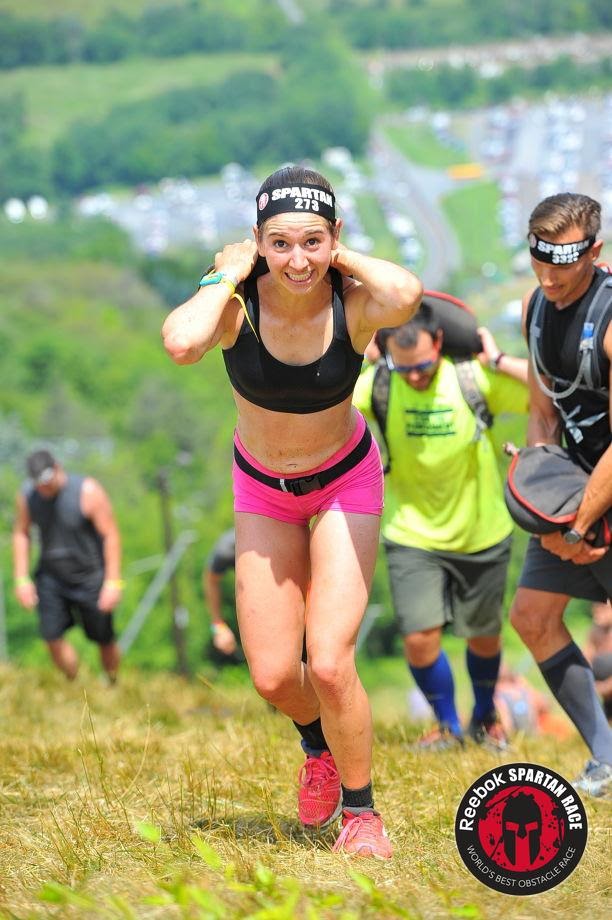
Something mentioned in any ostomy resource is that there isn’t anything that you can do without an ostomy that you can’t do with one, including exercise. Now, while I agree with this to an extent, I realized that all of these pamphlets and educational videos weren’t talking to my population: twenty-somethings who wanted to return to an intense level of physical activity. Everything I read talked about taking daily walks and swimming leisurely and gardening a vegetable patch as perfect forms of exercise post-surgery. And for ostomates belonging to these brochures’ target population, typically people decades older than me, this advice is perfect. However, I knew that as a girl who once joked that the gym was her second home, these activities wouldn’t necessarily feel fulfilling.
I started looking for ostomates who were exercising the way I was used to, and I found a ton of people who were still running and lifting and accomplishing their fitness goals. And while this was encouraging, these ostomates were all years out from their initial surgeries. Of course, they were running half marathons and lifting heavy weights and competing on par with bagless athletes - they were long out of the recovery stage! But what did this mean for me, who was barely two months out of surgery? What could I do now to eventually join the ranks of the fittest-of-the-fit ostomates? Again, I looked and looked, but I couldn’t find a single article or personal account about anyone’s return to fitness. So it became my mission to figure it out for myself.
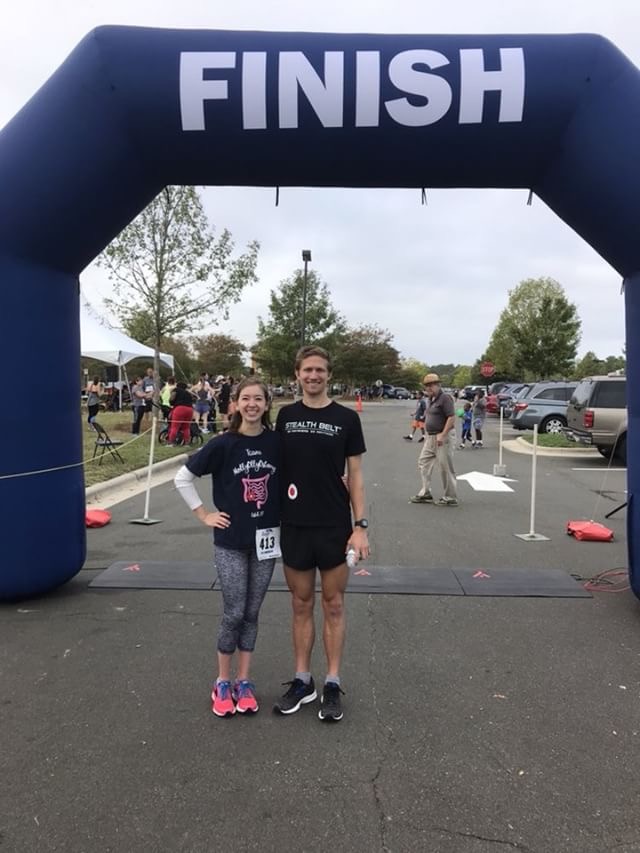
The first thing I did was reach out to ostomates who had already made that comeback. I wanted to know first steps to take, so I ended up contacting Collin Jarvis (StealthBelt VP) to find out what he started with after surgery. The answer? Post-C-Section abdominal exercises. Though they aren’t the most exciting exercises, they were essential in reminding my ab muscles what they needed to do. I started doing sets of pelvic tilts, glute bridges, shoulder raises, and gentle torso twists every day to activate the muscles that were already pretty deconditioned. Since one of the biggest risks of exercise with an ostomy is getting a hernia, taking this gradual approach was important. If I tried to jump right back into planks and crunches and hanging leg raises, I know I would be writing this article with a gigantic painful hernia. So although lying on the ground doing glorified hip thrusts bruised my ego a tad, those C-Section exercises started building a solid foundation for more complicated workouts.
I also decided to reintroduce some cardio. After working my way up to walking my whole neighborhood without a break, I figured the next step would be trying out the elliptical. I came downstairs 65 days after surgery ready to hop on the machine and go until I couldn’t go anymore. In my mind, I thought that would be close to a half hour at a decent pace. I got off the elliptical in tears after 15 minutes. I hadn’t broken a sweat. I hadn’t added any resistance. I hadn’t used any incline. I hadn’t pedaled faster than walking speed. My sutures felt like someone was sticking a cattle prod into them, and my ostomy was throbbing. To say I felt defeated would be a gross understatement. I thought based on that one attempt, there was obviously no chance I would ever run again. I let myself believe that story for a while, until my mom helped me remember the facts: I was barely two months out of surgery, this was my first attempt at major physical activity, and if the Molly lying in a hospital bed was told that she’d be feeling good enough to get on the elliptical again, she wouldn’t believe it. So I cut myself a little bit of slack, reframed my thoughts, and realized I needed a different plan to make the greatest comeback ever.
To do so, I knew I needed a boots-on-the-ground team. I have a pretty solid fitness background, but even so, working out complication-free is a lot different from developing a training plan with an ostomy. Plus, I am extremely Type-A and have been known to push myself too far too fast. That’s a problem when you’re trying to recover from an injury of any kind, but especially a surgical procedure that left me with a hole in my stomach. I knew I needed to add someone else to my team who could help me return to exercise safely. Since I was already a little nervous to return to college because I had spent every morning since freshman year in my campus gym - what was I going to do with myself if I couldn’t work out? - I started looking for resources close to campus. Not surprisingly, internet searches for “personal trainer ostomy” came back with no results, or if they did, they were for geriatric rehabilitation facilities.
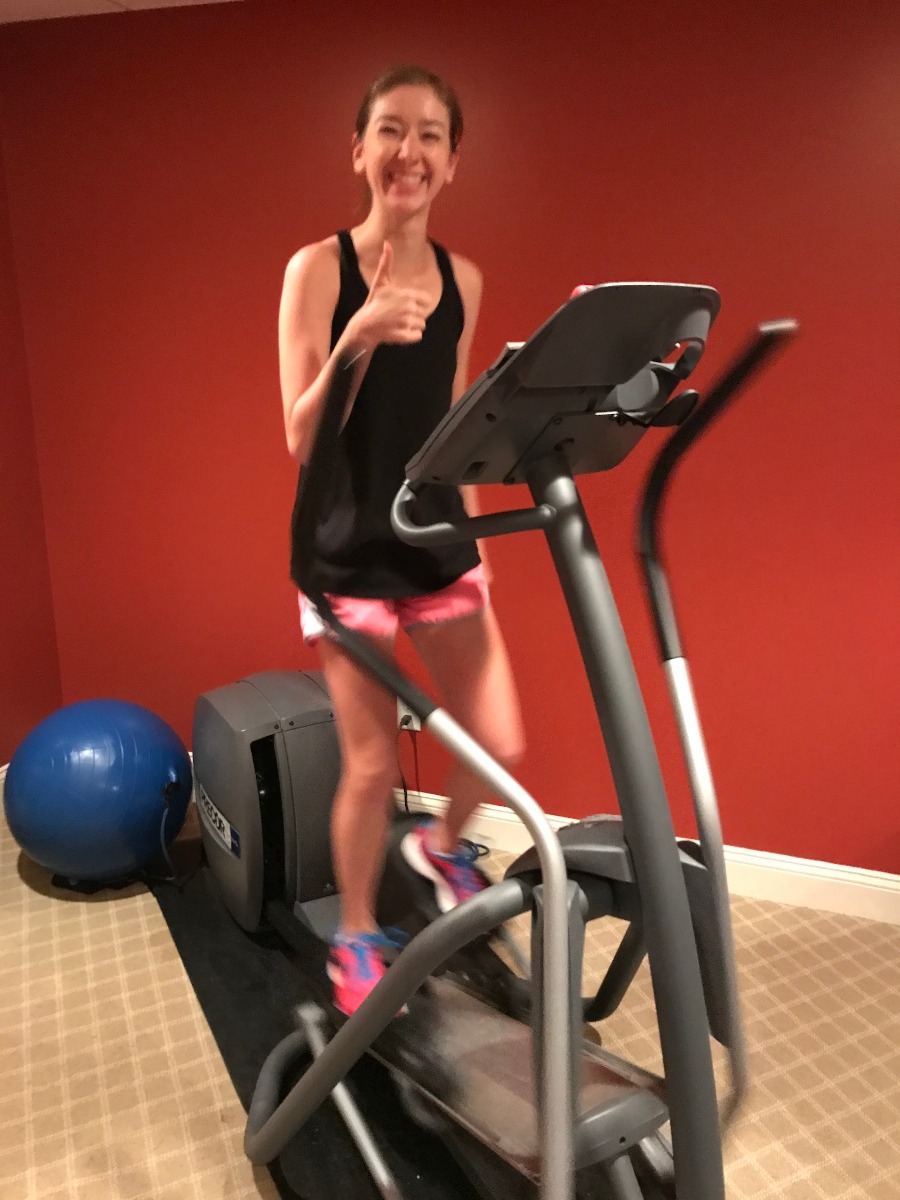
Not really what I was looking for. So instead, I reached out to a local gym, explaining my situation and hoping that someone there would want to take on the adventure that was my return to exercise. Luckily, I got directed to Robert. Robert had experience working with college-level athletes, but more importantly, he spent some of his early career doing in-patient rehabilitation at some local hospitals. This was key for me - I knew I wanted to work with someone who had both a training background and some awareness of ostomies. I needed to trust anyone I worked with to give me a good workout while considering how different exercises would affect my stoma. If I couldn’t trust them to keep me injury-free, it wouldn’t work out.
At my first session, we spent close to an hour going over my medical history, my exercise habits before my health issues started, and my goals for training. I immediately felt like Robert not only understood all of my limitations but also cared about my story and wanted to help. His interest in my story made me sure that he would take his time with my case and help me safely reach my lofty goals of returning to an intense workout regimen. From there, he determined that my plan needed to focus on general strength training to get me back to a baseline of fitness, but more importantly, and not surprisingly, it needed to focus primarily on regaining core strength. The core ends up activating in almost any exercise you do - anything involving pushing, pulling, lifting, twisting, you name the movement, it engages the core. Without a strong core, all other movements are not only difficult but also dangerous. If I wanted to get back to the level of exercise I’m hoping for, my core strength and stability needed to be my top priority.
The first few sessions really focused on taking baby steps towards strengthening my core. The majority of the exercises I did were isometrics, meaning they consisted of holding a position to gain strength rather than contracting my muscles to activate them. For an idea, a plank would be considered an isometric move, whereas a crunch would be considered a dynamic (contracting) move. I spent a lot of time laying on the floor and working on engaging my ab muscles without sticking my stomach out. The core muscles essentially act as a girdle for everything else behind them, which is why surgeons bring the stoma through the abdominal wall - it helps hold the stoma in place! However, in bracing the core, some people tend to push their stomachs out rather than “zipping up” their abdominal wall. When that “pushing out” occurs, hernias can happen. Nobody wants to deal with a hernia, so, practicing that bracing action trained my abs to behave properly when engaged and hopefully prevent a hernia. 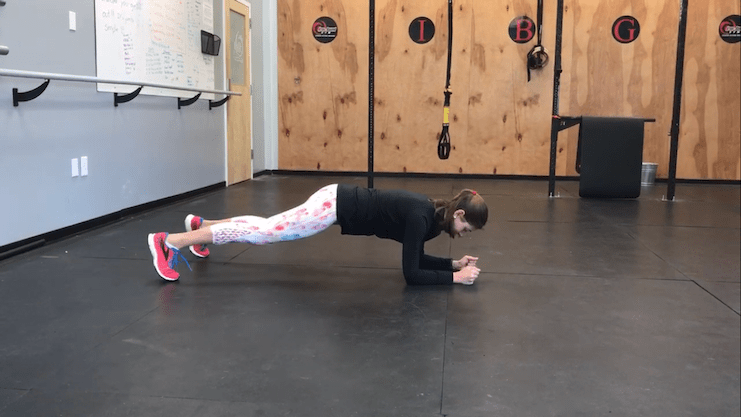
Once I got that down, Robert made things more complicated. With exercises like pistons, another isometric exercise, we started challenging my ab muscles a little more. In a piston, I brace my core while holding on to a band with my arms stretched out, and when Robert pulls on the other end, my core has to work to keep my arms out in front of me. The first few times we tried that, I felt some sharp pains in my sutures and near my stoma, so it took some adjustment. We could still do the exercise, just with a lot less resistance in the band. Gradually, we have worked up to more resistance, but it has taken time. But this helped me realize that modifications are key to this process. Instead of abandoning the exercise completely, we adjusted the details to make a piston an exercise to incorporate at my current level. It may not be where I want to be, but it’s only by fighting through those less-intense versions that I can boost the difficulty.
Of course, my training plan is tailored to me, so the exercises that I do weekly don’t all have to do with my ostomy. I have recently been diagnosed with Joint Hypermobility Syndrome, meaning that increasing joint stability to prevent dislocation is a big part of my program. I was also diagnosed with Postural Orthostatic Tachycardia Syndrome (POTS) which was causing my heart rate to jump dangerously whenever I attempted cardio. After a session where 5 minutes of pretty light intensity cardio caused my heart rate to jump from 51 to 186, we decided that strength training would be our priority until doctors gave the OK for cardio again. In addition to core strength, my plan contains a lot of exercises to gain hip, knee, ankle, and shoulder stability. That means a lot of balancing exercises, glute strengthening, and isometric upper-body exercises. My health consists of more than just my ostomy, so my exercise plan needs to reflect that.
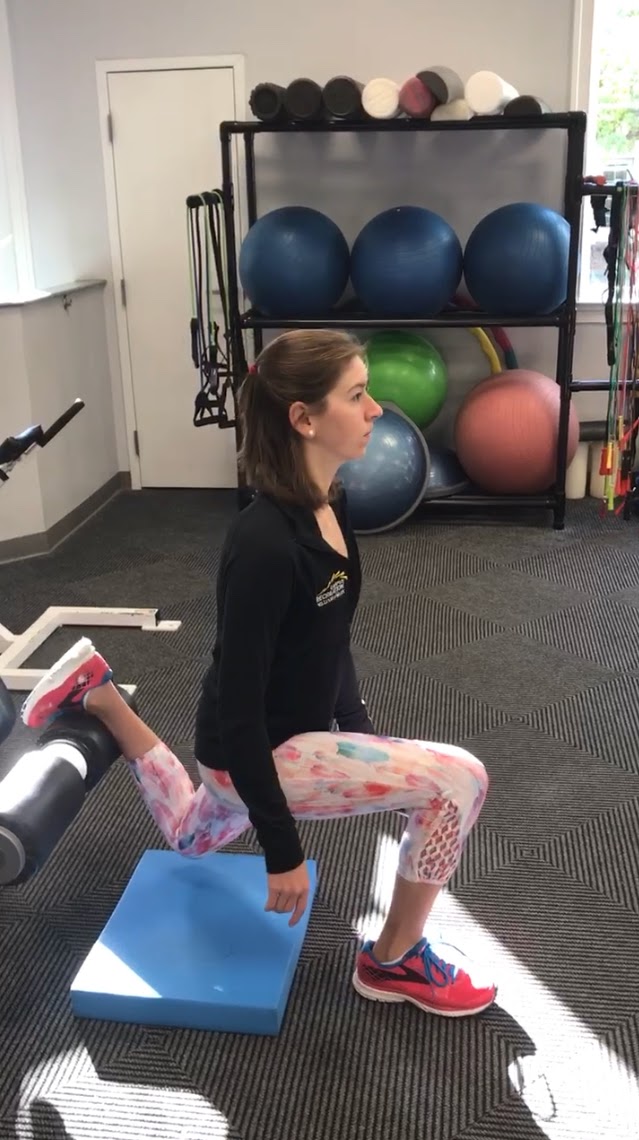
This leads me to an important point: all ostomates are different. Each of us has a different backstory, a different surgical experience, a different level of acceptance. All of these have a huge impact on recovery, and therefore, on the return to physical activity. I was a twenty-something female with decades-worth of chronic gastrointestinal issues. Although I had a background in fitness, I had also spent the past year unable to work out at the level I once could due to my problematic colon. Not only did I have ostomy surgery, I spent a good amount of time in the hospital with an ileus and after discharge, I passed out twice from heart rate and blood pressure issues. My recovery process was not a linear path, I had a lot of bumps along the way. So, of course, it would take some time to build back my exercise plan! I distinctly remember reading something from an ostomate who went and biked 5 miles the day after he left the hospital, and there I was, two months after surgery, still unable to walk the whole neighborhood. I felt like I wasn’t doing enough or trying hard enough. From then on, I stopped comparing myself to others and focused all that energy towards doing what was best for me and my situation.
It’s now about 3 months out from surgery and six weeks into my exercising, and I’m starting to see improvements. My workouts now include push-ups, triceps dips, Bulgarian squats, deadlifts, and planks. All of those are exercises that I wasn’t sure I would be able to do six months out of surgery, forget six weeks. The main reason I can do those exercises already? I started slow. By starting with a lot of isometrics and reminding my abs how to engage safely, I could advance to more difficult workouts. And when introducing a new exercise, I start with the most basic version and gradually work up to more challenging modifications. Taking things slowly and safely is the key to making a full recovery with as few hiccups as possible. 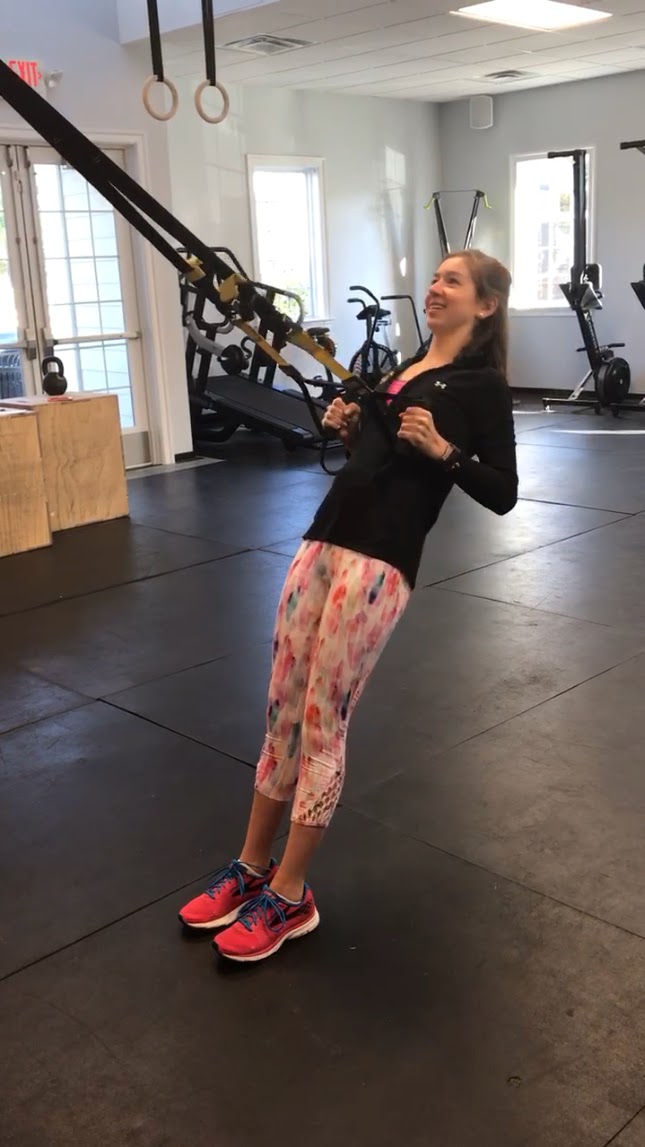
Something I keep reminding myself is that the recovery process is just as impressive as the end result. Will it be impressive when I finish my first obstacle course race with an ostomy bag on my stomach? Of course. But it’s just as impressive, if not more impressive, that three months out of surgery I am back in the gym. I’m doing workouts that may seem basic to others, but they are more challenging than anything I have ever done. Last year, I was proud of the fact that I could do 50 push-ups from my toes. This year, I’m even prouder that I can do ten push-ups from my knees. I am well on my way to making the biggest comeback ever, and I’m not afraid to show what making that comeback really entails. My workouts may not fit the standard criteria of “impressive” workouts, but they are pretty darn incredible given the circumstances. Slow and steady wins the race, and I can promise that this recovery will let me cross a finish line sometime soon.
Check out Molly's Instagram to follow along in her recovery and hear first-hand accounts of what life is like with a bag!
